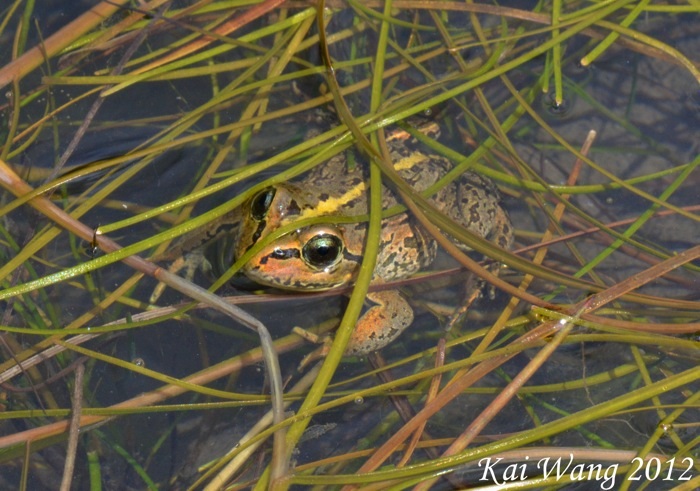
Extensive studies in continental regions have discovered that climate variations can have strong impacts on the distribution and evolutionary history of species. Now, a study of mountainous areas, where few studies have been conducted, has found similar patterns in the current distribution and population isolation of a frog species on the Tibetan Plateau.
 |
|
Nanorana parkeri from Tibetan Plateau (Source: Kai Wang/CalPhotos). |
Nanorana parkeri, also known as the High Himalaya Frog, is a frog species only found in the southern Tibetan Plateau with an altitudinal range of 2850 to 4700 meters above sea level. No other frog species lives in altitudes as high as N. parkeri.
Despite its limited geographical distribution, this medium-sized frog is very common in high-altitude grasslands, forests, marshes, and streams in the plateau. The varying topography, complex drainage system as well as high peaks make the region a biodiversity hotspot, where endemic species including N. parkeri can be spotted.
The researchers analyzed the sequences of one mitochondria and three nuclear DNA from N. parkeri to investigate the genetic diversity of this frog. The species distribution modeling was applied to examine whether this species survived locally during the Pleistocene glaciations and how the recolonization process was during postglacial times.
 |
|
Nanorana parkeri from Tibetan Plateau (Source: Kai Wang/CalPhotos). |
The divergence occurred long before the Last Glacial Maximum (LGM), which was 0.72 to 0.5 million years ago. This indicates that the genetic lineages survived during the maximum glaciation in glacial refugia. During LGM, ice sheets covered much of North America, northern Europe, and Asia, including the Tibetan Plateau.
Moreover, multiple refugia must have been existed for N. parkeri; otherwise, the genes would be mixed if the lineages were living in a single refuge. The researchers suggest that the Yarlung Zangbo valley in eastern region and the Kyichu catchment in the west might have been the refugia for the two lineages during historical glaciations.
 |
|
Yarlung Zangbo valley where Nanorana parkeri is found (source: Preston Rhea/Flickr). |
Although the frog is currently abundant, this study could have implications for conservation of frog species on the Tibetan Plateau. The two N. parkeri lineages have diverged for a long time with limited gene flow between them. Therefore, they each need to be protected separately. As a potential refugia for the frog, the Yarlung Zangbo valley and Kyichu catchment need to be conserved. (Glacier Hub)

86-10-68597521 (day)
86-10-68597289 (night)

52 Sanlihe Rd., Xicheng District,
Beijing, China (100864)

